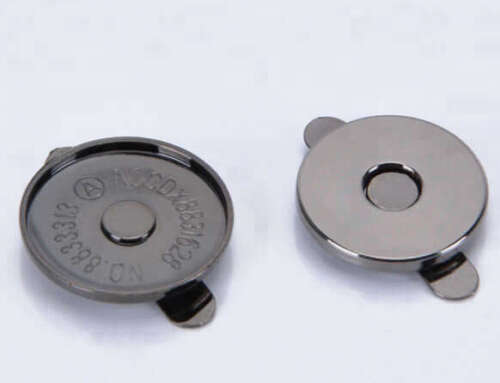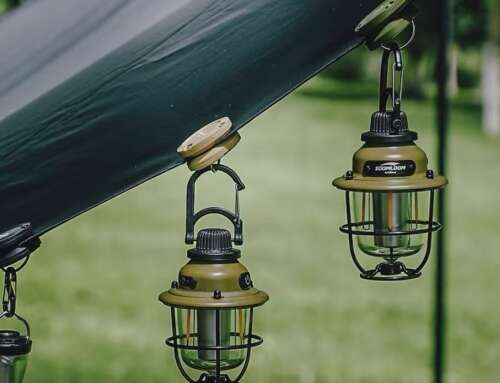Essential Guide to Bag Hardware: Understanding English and Chinese Jargon in the Industry
You might not realize that the terminology used in bag hardware can vary greatly between English and Chinese, often leading to confusion and costly mistakes. Understanding this jargon is more than just knowing words; it’s essential for effective communication in the manufacturing process and can directly impact the quality of your final product. As you explore the nuances of terms like D-rings and swivel hooks, you’ll uncover how mastering this language can elevate your expertise and streamline your sourcing efforts. What other insights await you in this complex landscape?
Key Takeaways
- Familiarize yourself with essential bag hardware components like D-rings and swivel hooks to improve communication in the industry.
- Understand commonly misunderstood terms in bag hardware to enhance professional credibility and avoid miscommunication.
- Recognize the importance of knowing both English and Chinese terminology to facilitate smoother collaboration with international manufacturers.
- Learn about the manufacturing process of bag hardware, including material selection and sustainability, to make informed decisions.
- Utilize custom logo hardware to strengthen your brand identity and differentiate your products in the competitive market.
Introduction to Bag Hardware

An artistic close-up of diverse bag hardware pieces including clasps, zippers, and studs, showcasing the craftsmanship and variety in the bag-making industry.
When diving into the world of bag hardware, you’ll quickly realize it’s not just about aesthetics; it plays an essential role in both functionality and durability. Understanding the essential components can elevate your bag-making projects and guarantee they serve others effectively. This guide to bag hardware introduces you to the fundamental elements you’ll encounter, from strap end caps to D-rings.
You’ll find that each piece of hardware contributes to the overall design and usability of the bag. For instance, slider buckles allow for adjustable straps, providing versatility for the user. Familiarizing yourself with the jargon of bag hardware helps you communicate your ideas clearly and confidently.
A well-designed bag not only looks good but functions seamlessly, making it easier for those who use it. Whether you’re crafting a stylish purse or a practical backpack, knowing the right hardware can make all the difference.
Key Terms in Bag Hardware – English vs. Chinese Jargon

A split-image comparison of modern bag hardware, such as zippers and clasps, and traditional Chinese bag hardware elements, illustrating the evolution of bag design.
Understanding bag hardware terminology is important for anyone in the fashion industry. You might encounter commonly misunderstood terms that can lead to confusion when sourcing materials. Let’s clarify these key terms in both English and Chinese to guarantee smooth communication and successful projects.
The Importance of Knowing Bag Hardware Terminology
Knowing the right terminology for bag hardware is essential for anyone involved in bag-making, whether you’re a seasoned designer or a hobbyist. Understanding these terms helps you communicate effectively with suppliers and customers, ensuring everyone’s on the same page. This knowledge can enhance your projects and provide a professional touch.
Here are three key reasons why knowing bag hardware terminology is important:
- Improved Communication: Using the correct terms allows you to convey your ideas clearly, minimizing misunderstandings with suppliers and clients.
- Quality Selection: Familiarity with terms like “D-rings,” “swivel hooks,” or “tassel caps” enables you to make informed choices when selecting hardware that meets your design needs.
- Professional Credibility: Demonstrating your knowledge of bag hardware terminology builds trust with customers and suppliers, establishing you as a credible and knowledgeable resource in the industry.
Commonly Misunderstood Terms
Many individuals discover that grasping the vocabulary in bag hardware can be challenging, notably when dealing with distinctions between English and Chinese terminology. It’s crucial to elucidate these terms to guarantee you’re effectively assisting your clients.
For instance, “D-Rings” in English denotes metal rings utilized for strap attachments, yet in Chinese, it might be translated into something more general, leading to confusion.
Another instance is “slider buckles.” In English, this phrase specifies adjustable buckles for straps, whereas the Chinese term may not convey the same utility, resulting in miscommunication. Moreover, “tassel caps” might be misinterpreted, as it could merely allude to ornamental features without recognizing their specific role in bag design.
To circumvent these challenges, acquaint yourself with both sets of terminologies. When conversing about hardware with suppliers or clients, request clarifications or visuals to make sure everyone is on the same wavelength. By bridging these linguistic disparities, you can elevate your service and craft bags that genuinely resonate with your target audience. Comprehending these frequently misconstrued terms will enable you to make well-informed choices and cultivate stronger relationships in the bag hardware sector.
The Manufacturing Process of Bag Hardware

Close-up of workers assembling various bag hardware components on a factory assembly line, demonstrating the detailed manufacturing process.
When you’re selecting bag hardware, the material you choose plays an important role in the overall quality and durability of your products. You’ll want to think about the sourcing process, as it can impact both aesthetics and performance.
Once you’ve made those decisions, understanding the production and assembly methods will help guarantee your hardware meets your design expectations.
Material Selection and Sourcing
How do you select the right materials for bag hardware? Choosing the best materials is essential for both functionality and aesthetics in your bag projects. You want to make sure that the hardware complements your design and meets the needs of the end user. Here are three key factors to take into account when sourcing materials:
- Durability: Look for materials that can withstand daily wear and tear. Metal hardware should be rust-resistant and sturdy, while synthetic materials should be high-quality and resilient.
- Finish and Appearance: Choose finishes that align with your design vision. Options like brushed, polished, or matte can greatly impact the overall look of your bag. Think about how colors will complement your fabric choices.
- Sustainability: More consumers care about eco-friendly products. Opt for materials sourced responsibly, whether it’s recycled metals or vegan leathers made from sustainable resources.
Production and Assembly
Once you’ve selected the right materials for your bag hardware, the next step is understanding the production and assembly process. This involves several key manufacturing techniques that guarantee your hardware is both functional and stylish.
First, CNC machining is a precise method where raw materials are cut using computer-controlled tools. While it’s great for accuracy, it isn’t suited for large-scale production.
For mass production, mold casting is often used; molten metal is poured into molds, creating the desired shapes efficiently.
After forming, finishing techniques come into play. Electroplating, powder coating, and anodizing enhance the appearance and durability of your hardware. These processes not only protect against wear and tear but also add a professional touch.
Commonly Used Bag Hardware Components

An artistic arrangement of bag hardware components including zippers, buckles, rivets, snaps, and D-rings, highlighting their intricate details and finishes.
Understanding the various components of bag hardware is crucial for anyone looking to create or customize their own bags. Knowing these elements not only enhances your design but also guarantees you serve your customers better by providing functional and stylish options.
Here are three commonly used bag hardware components you should be familiar with:
- D-Rings: These are versatile attachment points for straps, allowing you to create adjustable lengths and secure hooks. They’re perfect for bags needing extra functionality.
- Swivel Hooks: Ideal for attaching straps to bags, swivel hooks offer flexibility and ease of use. They prevent twisting, ensuring your bag remains user-friendly.
- Zippers: A must-have for closures, zippers come in various styles and sizes. They add a sleek finish to your bags while safeguarding your belongings.
How to Choose the Right Bag Hardware for Your Product

Close-up of various shiny clasps, vibrant zippers, and ornate buckles, showcasing the diversity in materials and finishes for handbag design.
When choosing bag hardware, you need to balance durability and aesthetics to guarantee your product stands out while lasting through wear and tear.
Think about how customizing your hardware can enhance your bag’s overall design and functionality.
Durability vs. Aesthetics
Choosing the right bag hardware involves balancing durability and aesthetics, two critical elements that can make or break your product. You want your bags to not only look good but also stand the test of time.
Here are three key factors to contemplate:
- Material Quality: Opt for hardware made from robust materials like stainless steel or high-grade metal. They resist wear and tear, ensuring your bag lasts.
- Design Versatility: Choose hardware that complements your bag’s style. Elegant finishes can enhance aesthetic appeal, making the bag more attractive to your customers.
- Functionality: Reflect on how the hardware will be used. For example, if you’re designing a bag that needs to withstand heavy use, prioritize durable clasps and zippers that won’t fail over time.
Customizing Your Bag Hardware
Customizing your bag hardware is essential for creating a product that reflects your unique style and meets your functional needs. Start by identifying the purpose of your bag. Are you crafting a sophisticated handbag, a practical tote, or a trendy backpack? Each design calls for different hardware components.
Next, consider the materials. Choose metals that complement your bag’s fabric, whether it’s leather, canvas, or synthetic materials. For a polished look, opt for high-quality finishes like brass, nickel, or gold plating.
Don’t forget to think about colors; selecting hardware in shades that match or contrast with your bag can elevate its overall appeal.
Evaluate the functionality of your hardware. For instance, if you need adjustable straps, D-rings or slider buckles work well. If security is a priority, magnetic snaps or turn locks are great choices.
To conclude, think about durability—invest in sturdy components that can withstand everyday use.
The Role of Custom Logo Hardware in Brand Identity

Close-up of custom logo hardware on a stylish handbag, with intricate designs and textures, surrounded by a workshop setting full of tools and materials.
Custom logo hardware plays an essential role in shaping your brand identity. By incorporating unique designs, you create a memorable connection with your customers that sets you apart from competitors.
Let’s explore how custom hardware can enhance your brand’s visibility and appeal.
Why Custom Logo Hardware Matters
Logo hardware serves as a powerful tool in establishing brand identity, enhancing recognition, and loyalty among consumers. When you incorporate custom logo hardware into your bags, you’re not just adding a decorative element; you’re creating a lasting impression. Here’s why it matters:
- Unique Differentiation: Custom logo hardware sets your products apart from competitors, making your brand memorable and distinctive in a crowded market.
- Professional Appeal: High-quality logo hardware elevates the overall appearance of your bags, suggesting that you care about both design and craftsmanship. This professionalism can attract discerning customers.
- Emotional Connection: When consumers recognize and connect with your brand logo, it fosters a sense of loyalty and trust. They’re more likely to return and recommend your bags to others.
Creating a Strong Brand Identity with Custom Hardware
In today’s competitive market, creating a strong brand identity is essential for standing out and fostering customer loyalty. Custom logo hardware plays a pivotal role in this process. When you incorporate unique hardware with your brand’s logo, you not only enhance the aesthetic appeal of your bags but also communicate your brand’s values and commitment to quality.
Think about how a well-placed logo on a buckle or zipper can transform an ordinary bag into a statement piece. Every time a customer uses your product, they’re reminded of your brand, creating a lasting impression. This connection can lead to repeat business and referrals, as satisfied customers share their experiences with others.
Moreover, custom hardware can differentiate your products from competitors, allowing you to carve out a niche in the market. By prioritizing thoughtful design and high-quality materials, you show your customers that you care about their needs and preferences. This attention to detail not only builds trust but also encourages emotional connections with your brand.
Ultimately, investing in custom hardware is a powerful step toward establishing a memorable and impactful brand identity.
Richarms – Your Trusted Partner in Bag Hardware Manufacturing

China magnetic snaps factory – magnetic snap on handbag tote purse
When it comes to bag hardware manufacturing, Richarms stands out as a trusted partner that delivers quality and innovation. You’ll find that their commitment to excellence guarantees your projects receive the best hardware available.
Here are three reasons why Richarms is the right choice for your bag hardware needs:
- Diverse Product Range: Richarms offers a wide selection of hardware, including D-rings, buckles, and strap end caps, available in various colors and finishes to match your designs.
- Quality Assurance: Every piece from Richarms undergoes rigorous quality control, ensuring you receive durable products that enhance both functionality and aesthetics.
- Sustainable Practices: They prioritize environmentally friendly materials and manufacturing processes, allowing you to create stylish bags while supporting sustainability.
Frequently Asked Questions
What Are the Environmental Impacts of Bag Hardware Production?
When you consider bag hardware production, ponder the environmental impacts. Opt for suppliers who prioritize sustainable materials, minimize waste, and adhere to eco-friendly practices, ensuring your projects contribute positively to the planet.
How Can I Maintain and Care for Bag Hardware?
Think of your bag hardware like a garden; with care, it flourishes. Regularly clean, apply protective coatings, and store it properly to guarantee longevity. You’ll keep your creations looking fresh and inviting for everyone who sees them.
Are There Safety Regulations for Bag Hardware Materials?
Yes, there’re safety regulations for bag hardware materials. You should verify that the components comply with local standards, focusing on non-toxic materials and durability. This keeps your products safe and appealing to your customers.
Can Bag Hardware Be Recycled or Repurposed?
Imagine a garden where old hardware blooms anew. You can recycle or repurpose bag hardware, transforming it into unique pieces. By doing this, you serve creativity and sustainability, breathing life into forgotten treasures.
What Trends Are Emerging in Bag Hardware Design?
You’ll notice emerging trends in bag hardware design focusing on sustainability, innovative materials, and multifunctionality. Designers are blending aesthetics with practicality, creating unique pieces that serve both style and purpose for the modern user.
Conclusion
In the world of bag hardware, understanding the right terms and components can make all the difference. Just like a well-fitted key opens a door, having the right hardware elevates your designs and brand identity. With the insights from this guide, you’re equipped to navigate the complexities of the industry confidently. Remember, knowledge is power—so keep learning, keep creating, and let Richarms be your trusted partner in bringing your visions to life.





